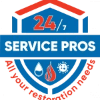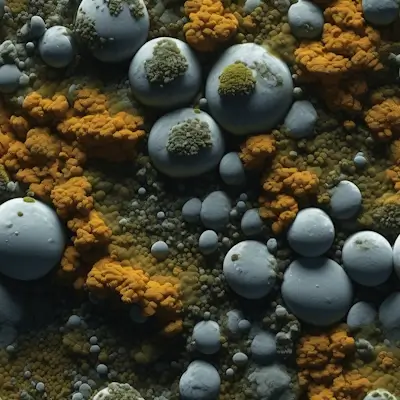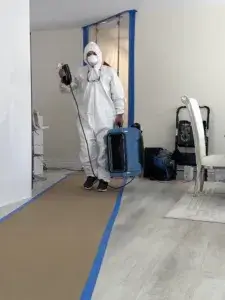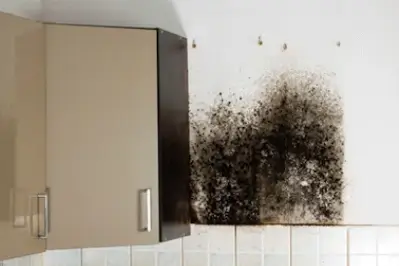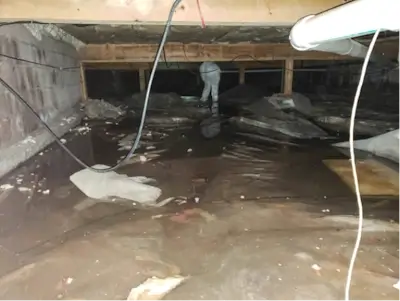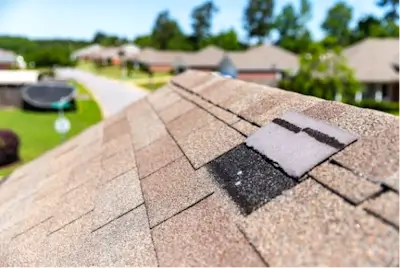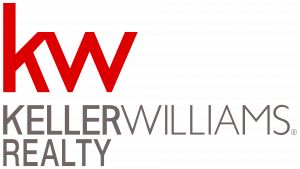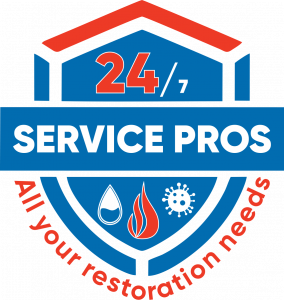When it comes to dealing with unsightly patches of fungi in your home, it’s important to understand the difference between mold and mildew. While both are types of fungi, they have distinct characteristics and require different approaches for removal. In this article, we will explore the signs of mold and mildew, the potential health risks they pose, and the best methods for prevention and removal.
Table of contents
Understanding Mold
Mold is a formidable foe that can cause significant damage to your home and your health. When you spot a blotch of mold in your bathroom or basement, it’s natural to feel alarmed. Mold can trigger a range of symptoms, including difficulty breathing, eye irritation, sore throat, sneezing, rashes, confusion, fatigue, and even severe respiratory problems in the case of dangerous black mold.
To effectively combat mold, it’s crucial to understand its requirements for growth. Mold needs four things to thrive: air, water, food, and a temperature between 41 and 104 degrees Fahrenheit. While controlling temperature and oxygen levels can be challenging, one of the most effective ways to prevent mold growth is by drying the affected area with proper ventilation.
Conditions Required for Mold Growth:
- Air
- Water
- Food
- Temperature between 41 and 104 degrees Fahrenheit
Mildew: The Lesser Evil
Compared to mold, mildew is a less invasive and troublesome type of fungi. Typically found in wet areas, such as bathrooms, mildew appears as grayish-white patches that may turn brown over time. It has a powdery texture and tends to grow only on the surface of materials, such as bathroom tiles. If you notice powdery white specks collecting in the corners of your shower, you can easily eliminate mildew by using cleaning products like bleach or vinegar (mix one cup of bleach with one gallon of water).
While mildew can cause similar allergic reactions to mold, it is less of a threat due to its surface-level growth and easier removal. A little bleach can effectively eliminate mildew and prevent it from spreading further.
Typical Traits of Mildew:
- Grayish-white or brown appearance
- Powdery texture
- Foul odor
Mold: Now You’ve Got Issues
Unlike mildew, mold can be challenging to detect and remove. The warning signs of a mold infestation are often subtle, and it can easily go unnoticed until it becomes a significant problem. One of the first indications of mold is a musty, pungent smell. If you notice this odor in your home, there’s a good chance that mold is hiding somewhere nearby.
Mold appears fuzzier and darker than mildew, and it can grow in various colors, ranging from black to bright red or dark green. It can resemble a small patch of dirt, making it easy to ignore until it’s too late. Additionally, if you spot mold on the surface, there may be a larger hidden infestation elsewhere in your home. Removing mold can be a costly and labor-intensive process.
Typical Traits of Mold:
- Black, bright red to dark green appearance
- Fuzzy texture
- Musty smell
When In Doubt, Call For Help
While small mold problems in the bathroom can be handled with some elbow grease, larger and more invasive mold infestations require professional assistance. If you’re unsure about the severity of the issue or suspect that mold may be present in other areas of your home, it’s best to call a professional. The cost of professional mold removal can range from $2,000 to $6,000, depending on the extent of the infestation and the areas affected.
Additional Resources:
Strike First: Preemptive Solutions to Mold Problems
Prevention is always better than dealing with a full-blown mold infestation. If you’re building or renovating a home, incorporating mold-resistant products can significantly reduce the risk of encountering mold in the future. Remember, mold thrives in moist environments, so keeping your home dry is key to keeping mold at bay. The fight against mold has become more high-tech and scientific, with innovative solutions available.
Here are some effective ways to keep your house dry and mold-free:
- Start from the outside: Use a water-resistant membrane, such as CertainTeed’s CertaWrapTM, to keep your entire house dry.
- Protect your walls: Apply awaterproof coating to your exterior walls to prevent moisture from seeping in.
- Proper ventilation: Install exhaust fans in high-moisture areas like bathrooms and kitchens to remove excess humidity.
- Fix leaks promptly: Any signs of water damage, such as leaks or damp spots, should be addressed immediately to prevent mold growth.
- Monitor humidity levels: Use a dehumidifier to maintain humidity levels below 50% in your home, especially in basements and other damp areas.
Frequently Asked Questions
Yes, both mold and mildew can cause a range of health issues, including respiratory problems, allergies, and skin irritation. It’s important to address any mold or mildew growth promptly to minimize the risk to your health.
Mold behind walls can be challenging to detect. Look out for signs such as a musty smell, water stains, or peeling paint. If you suspect mold behind your walls, it’s best to consult a professional for a thorough inspection.
Small areas of mold can be cleaned with a mixture of bleach and water or other mold-killing products. However, larger infestations or mold in hard-to-reach areas should be handled by professionals to ensure proper removal and prevent further contamination.
To prevent mold in your bathroom, ensure proper ventilation by using exhaust fans or opening windows after showering. Wipe down surfaces regularly, fix any leaks promptly, and use mold-resistant paint or caulk in high-moisture areas.
It depends on your insurance policy and the cause of the mold. Some policies may cover mold caused by sudden and accidental water damage, while others may not. Review your policy or consult with your insurance provider to understand your coverage.
Additional Resources:
In conclusion, mold and mildew are two different types of fungi that can cause problems in your home. While mildew is relatively easy to remove and poses fewer risks, mold can be more invasive and harmful to your health. It’s important to address any signs of mold or mildew promptly and take preventive measures to keep your home dry and mold-free. If you’re unsure about the severity of the issue or need assistance with mold removal, don’t hesitate to seek professional help. Remember, prevention is key when it comes to dealing with mold and mildew.
Which Areas We Serve in South Florida?
- Hollywood
- Davie
- Miami Beach
- Weston
- Hallandale Beach
- North Miami Beach
- Sunrise
- Tamarac
- Coconut Creek
- Fort Lauderdale
- Miami
- Boca Raton
- Hialeah
- Margate
- Pembrock Pines
- Dania Beach
- Lauderhill
- Delray Beach
- Pompano Beach
- Deerfield Beach
- Coral Springs
- Plantation
- Doral
- Aventura
- Miramar
- Sunny Isles Beach
